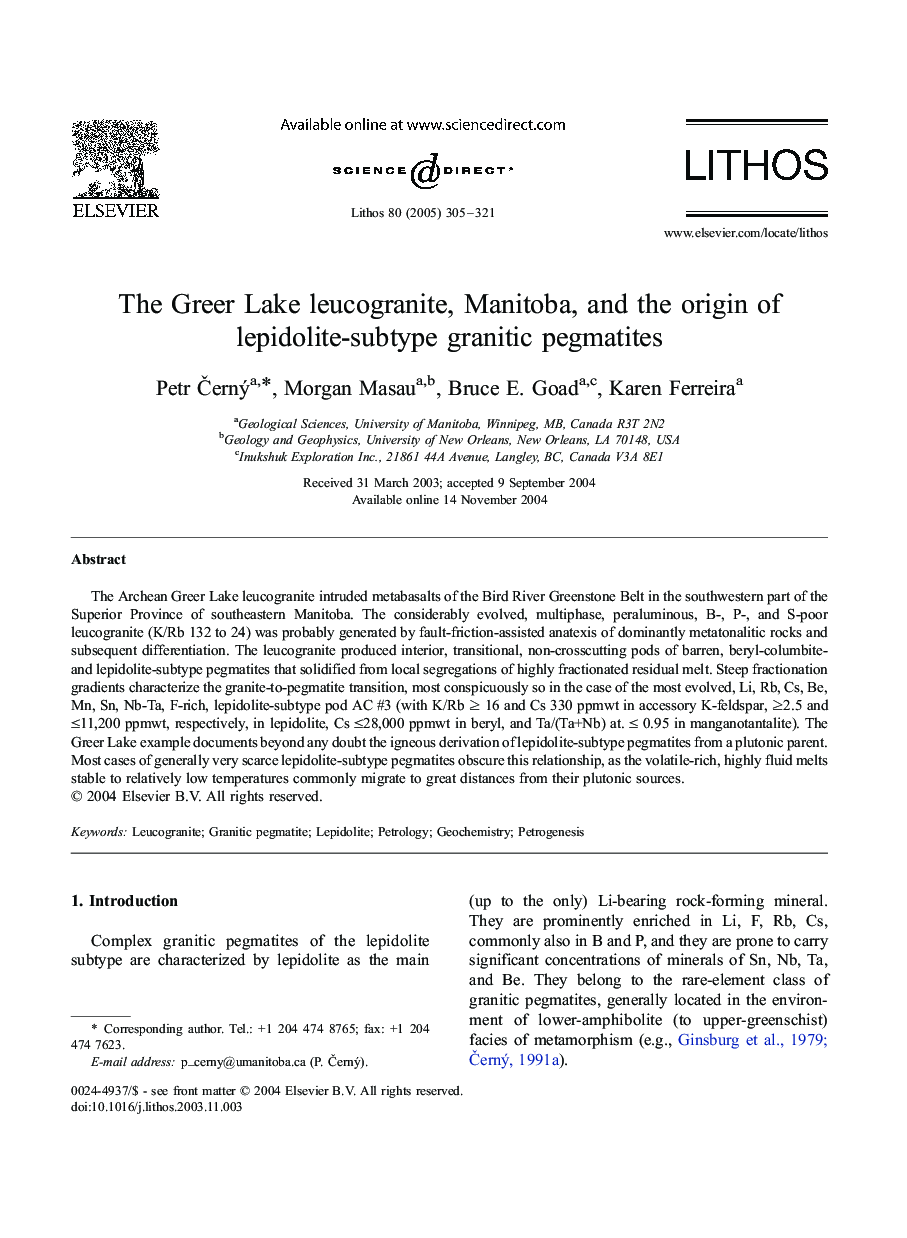| Article ID | Journal | Published Year | Pages | File Type |
|---|---|---|---|---|
| 9532110 | Lithos | 2005 | 17 Pages |
Abstract
The Archean Greer Lake leucogranite intruded metabasalts of the Bird River Greenstone Belt in the southwestern part of the Superior Province of southeastern Manitoba. The considerably evolved, multiphase, peraluminous, B-, P-, and S-poor leucogranite (K/Rb 132 to 24) was probably generated by fault-friction-assisted anatexis of dominantly metatonalitic rocks and subsequent differentiation. The leucogranite produced interior, transitional, non-crosscutting pods of barren, beryl-columbite- and lepidolite-subtype pegmatites that solidified from local segregations of highly fractionated residual melt. Steep fractionation gradients characterize the granite-to-pegmatite transition, most conspicuously so in the case of the most evolved, Li, Rb, Cs, Be, Mn, Sn, Nb-Ta, F-rich, lepidolite-subtype pod AC #3 (with K/Rb ⥠16 and Cs 330 ppmwt in accessory K-feldspar, â¥2.5 and â¤11,200 ppmwt, respectively, in lepidolite, Cs â¤28,000 ppmwt in beryl, and Ta/(Ta+Nb) at. ⤠0.95 in manganotantalite). The Greer Lake example documents beyond any doubt the igneous derivation of lepidolite-subtype pegmatites from a plutonic parent. Most cases of generally very scarce lepidolite-subtype pegmatites obscure this relationship, as the volatile-rich, highly fluid melts stable to relatively low temperatures commonly migrate to great distances from their plutonic sources.
Related Topics
Physical Sciences and Engineering
Earth and Planetary Sciences
Geochemistry and Petrology
Authors
Petr Äerný, Morgan Masau, Bruce E. Goad, Karen Ferreira,
